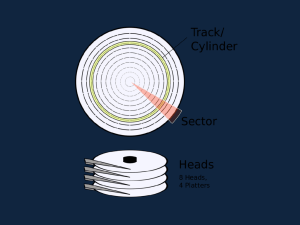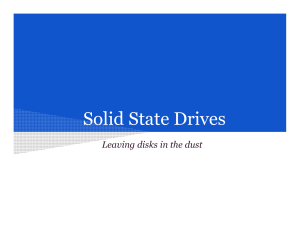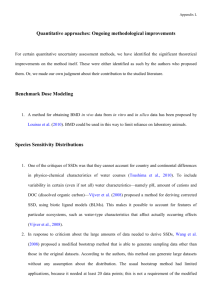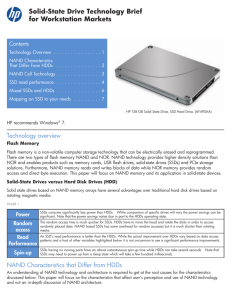Understading the Anatomy of Solid State Drives
advertisement
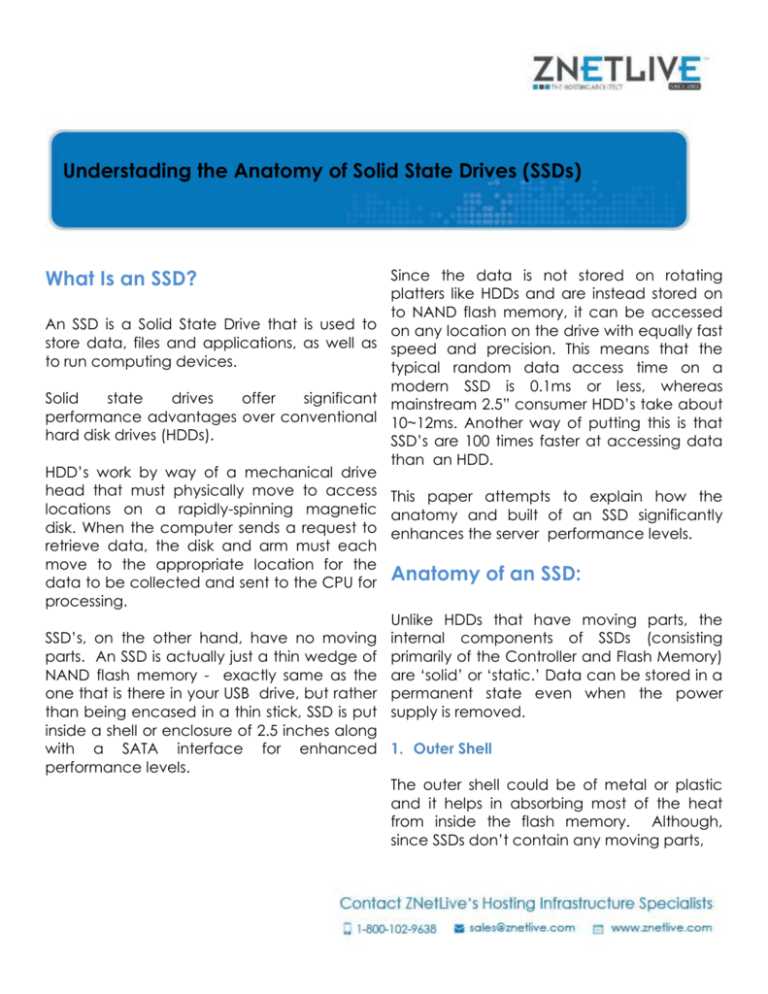
Understading the Anatomy of Solid State Drives (SSDs) What Is an SSD? An SSD is a Solid State Drive that is used to store data, files and applications, as well as to run computing devices. Solid state drives offer significant performance advantages over conventional hard disk drives (HDDs). Since the data is not stored on rotating platters like HDDs and are instead stored on to NAND flash memory, it can be accessed on any location on the drive with equally fast speed and precision. This means that the typical random data access time on a modern SSD is 0.1ms or less, whereas mainstream 2.5” consumer HDD’s take about 10~12ms. Another way of putting this is that SSD’s are 100 times faster at accessing data than an HDD. HDD’s work by way of a mechanical drive head that must physically move to access This paper attempts to explain how the locations on a rapidly-spinning magnetic anatomy and built of an SSD significantly disk. When the computer sends a request to enhances the server performance levels. retrieve data, the disk and arm must each move to the appropriate location for the data to be collected and sent to the CPU for Anatomy of an SSD: processing. Unlike HDDs that have moving parts, the SSD’s, on the other hand, have no moving internal components of SSDs (consisting parts. An SSD is actually just a thin wedge of primarily of the Controller and Flash Memory) NAND flash memory - exactly same as the are ‘solid’ or ‘static.’ Data can be stored in a one that is there in your USB drive, but rather permanent state even when the power than being encased in a thin stick, SSD is put supply is removed. inside a shell or enclosure of 2.5 inches along with a SATA interface for enhanced 1. Outer Shell performance levels. The outer shell could be of metal or plastic and it helps in absorbing most of the heat from inside the flash memory. Although, since SSDs don’t contain any moving parts, Understading the Anatomy of Solid State Drives (SSDs) they give off very little heat and emit no noise. This particular feature is vital in increased durability of an SSD. An SSD can withstand 10X more vibration than an HDD and up to 1500G of shock (compared to less than 70Gs for a typical HDD). SSDs exceed expectations in handling shock, vibration, and temperature extremes as well. Wear-leveling data (Wear leveling is a process to distribute write/erase cycles evenly among all flash blocks of the SSD to prevent data from becoming unreliable and a particular block from wearing out) is also stored on the cache for some time during the running of the drive. 2. NAND Flash 4. Controller Data is held in memory chips called NAND Flash. They are normally present in clusters among groups of chips that cover PCB’s both sides. Because of this, the access time of SSD is really fast as the data is fetched directly from the NAND flash memory and the seek time, which is the time taken by the drive controller to place the read/write head into right position on the HD platter for reading/writing data, associated with the traditional drives, is greatly reduced. The controller, normally a multicore processor, is the heart of the SSD and it is the one that performs all the functions and is the main factor that separates one SSD from the other. Another factor separating SSDs is the custom firmware designed by the drive maker. Controllers liaise with NAND on parallel channels, uncompress and compress data, and also maintain the drive by collecting garbage. 3. DRAM Buffer A bit of DRAM is included in every SSD for the process of buffering. Similar to hard drive’s cache, data is stored on it for some time temporarily before it is being written to the device. Understading the Anatomy of Solid State Drives (SSDs) Understading the Anatomy of Solid State Drives (SSDs) Advantages over traditional HDDs: SSDs and HDDs technically do the same job – they both store data,files and applications, as well as run computing devices. However, each has unique features, pros and cons, which are majorly an outcome of their anatomy. A hard drive requires time to spin up or fully load applications and programs for normal operation. A server with an SSD boots faster, launches apps faster, and has higher overall performance. Solid state devices are engineered for users who want instant-on capabilities for all of their websites and applications. Understading the Anatomy of Solid State Drives (SSDs) Another advantage SSDs see is their consistent performance. Unlike HDD’s which can suffer from data fragmentation, the use of integrated circuits instead of spinning platters allow SSD’s to manage how the data is stored. This again leads to lower data access latency and need to run defragmentation programs used to manage the storage location on a HDD. SSDs are noiseless since they are static devices without any mechanical or moving parts. HDDs on the other hand are mechanical devices with moving parts that make noise. Also, SSDs have no moving parts so very less heat is generated. Since a SSD has no moving parts, it is more likely to keep your data safe if the device is dropped or knocked around while operating. Disadvantages of SSD: The only single disadvantage of SSDs is that they are quite expensive. But there’s a silver lining to it- prices of SSDs are decreasing rapidly. Moreover, with an increase in SSD adoption rates, prices are sure to fall further.
